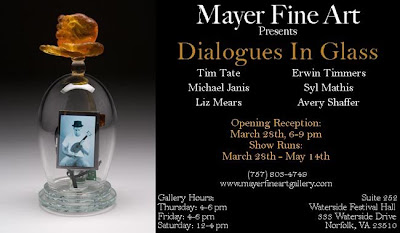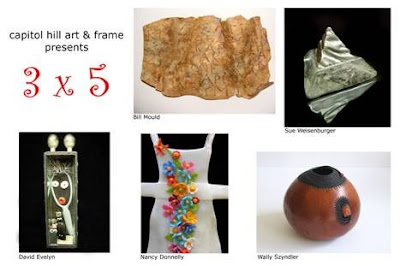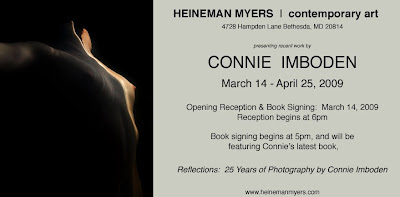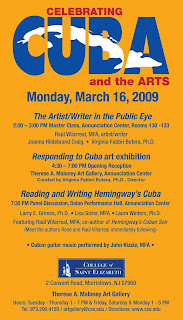At the D'Art Center in Norfolk

In the many years that I have been jurying or curating art exhibitions around the nation, I have never ceased to be impressed each and every time by the diversity of the human mind when putting pen to paper, or brush to canvas or chisel to stone, or eye to camera view finder.
And yet, after well over 300 exhibitions in which I have had a hand in orchestrating, I can say with an enthusiastic attitude that the recent exhibition for Norfolk's D’Art Center (which opened last Friday) provided me, the juror, with one of the most pleasant and interesting and intelligent juried competitions that it has been my honor to put together.
Hundreds of artists from 17 states submitted work for the competition, so the talent pool was diverse and geographically diverse.
My first pleasant surprise in jurying this exhibition was the high number of really good entries from which I was to select the exhibition, or better said, competition. Those artists which I selected really brought their best to the show and competed well. And having said that, there were at least a dozen more artists, had space allowed it, that could have been included.
My second surprise was the significant number of really good three dimensional entries in the pool of submissions. I express this as surprise because generally, most of these national level jury shows are comprised of 90% two-dimensional work and a handful of sculptures or other 3D pieces.
The 3D pieces competed well, also a pleasant change of pace for me and my experience on this subject. Super entries such as Lesley Hildreth’s “Hares, multiplying like rabbits while waiting for the Tortoise,” a remarkable clay piece with multiple sculptures which marry oddly zoomorphic imagery with intelligent composition and design and a superb title that would have made Barnett Newman proud of the often ignored art of titling art.
Or in an almost 180 degree artistic U-turn, Sarah Haven’s elegant and minimalist “Ideal,” a ceramic, glaze and decal sculpture which uses clues to have the viewer interpret her work, rather than forcing her ideas upon us.
Another unusual surprise came to me in the work of Virginia painter Mark Miltz, whose trompe l’oeil work is very familiar to me. In his sculptural installation “Game,” Miltz brings something new to me, and certainly sure to raise some eyebrows in Norfolk, or anywhere else for that matter.

Mark Miltz. The Game. Sculptural InstallationHaving said all that, the two dimensional artists represented themselves very well in this competition, from Chris Register’s superb “Vespa,” one of the best examples of how pen and ink can really flex its artistic muscles in the hands of a talented artist, to Art Werger’s flawless work, which really showcases what the art of printmaking can deliver in the gifted hands of a master printmaker.
In this postmodern world in which sometimes ideas and concepts receive more attention than the art itself, and where technical virtuosity is sometimes denigrated, Werger is a great example of how a real contemporary master can marry technical virtuosity with ideas, composition and creativity to deliver artwork of the highest caliber.
To those of you chosen for the exhibition, my congratulations on a well deserved accomplishment – it was a tough decision in a tough competition against your fellow artists. To those of you whose work did not make the show, I applaud your continued development as an artist and your desire to compete and show your work. It has been my honor and pleasure to look at all of your work.





























